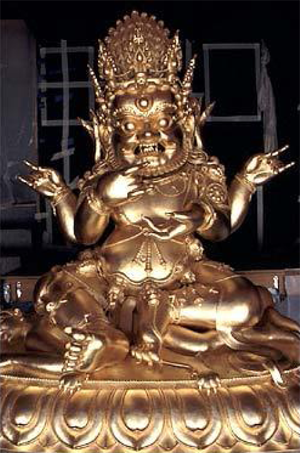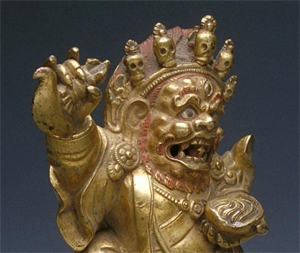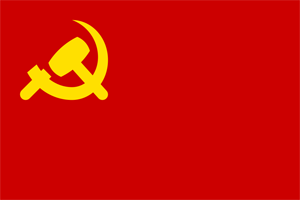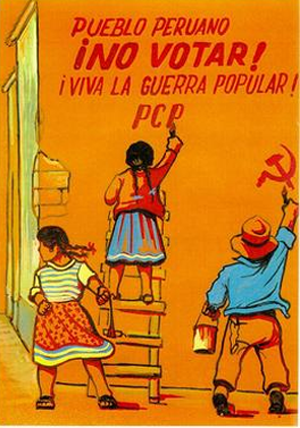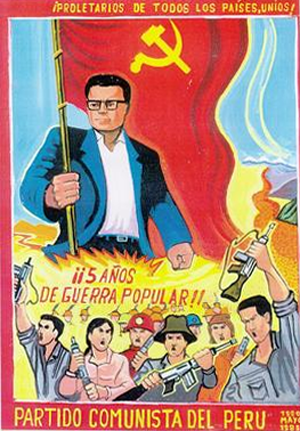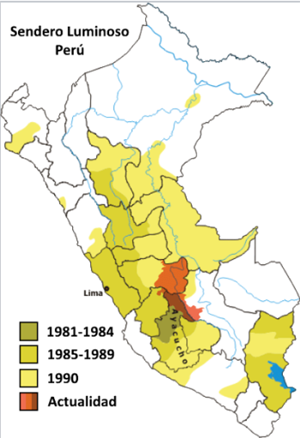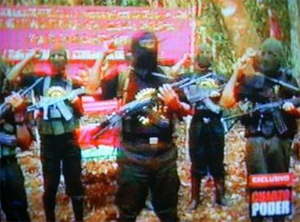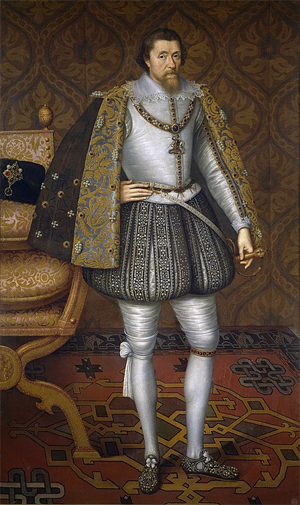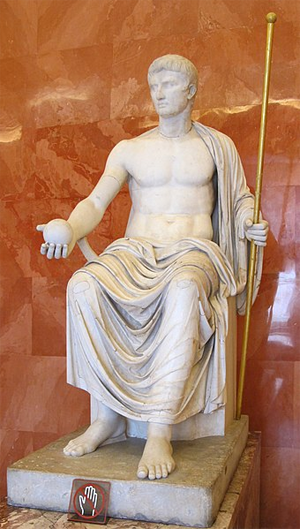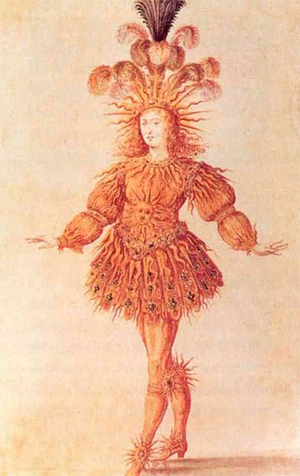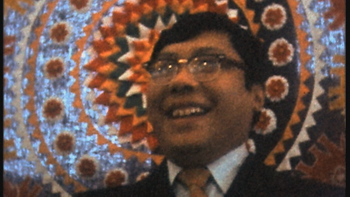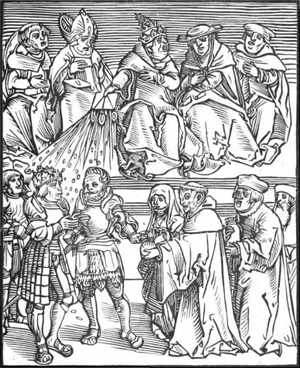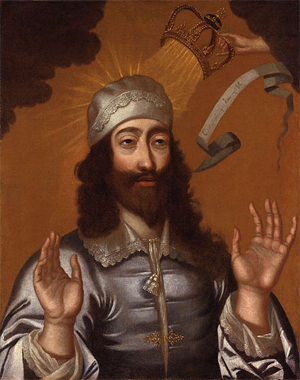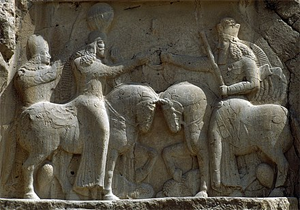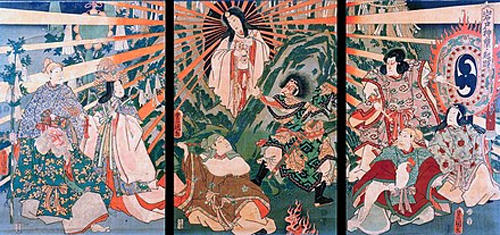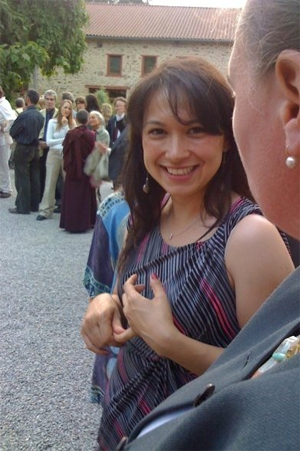Re: Former teacher at Boulder's Shambhala accused of sexuall
Part 1 of 2
Kanyu, Fengshui and Court Energetics
PART II: ON THE ENERGETICS OF SHAMBHALA CENTRES
Based on the teachings of Eva Wong
Editor: Peter C. van der Molen
Version: 13012012
NOTICE: THIS WORK MAY BE PROTECTED BY COPYRIGHT
Table of Contents
• INTRODUCTION
• SHAMBHALA
• SHAMBHALA CENTRES: THE COURT PRINCIPLE
• COURT ENERGETICS
• SACRED SPACE OF THE SHAMBHALA CENTRE
• PROTECTOR PRINCIPLE
• COLOPHON
INTRODUCTION
As human beings we aim at leading a happy and meaningful life, in which we not only need to care for ourselves and those around us, but also want to develop in a spiritual sense in order to work with our daily experiences. Many traditions over many millennia have aimed at providing the conditions for a happy life and spiritual development. In Asia some traditions stand out in this sense: in Tibet it is the Buddhist spiritual path and the Warrior traditions that have evolved over many lifetimes. In China the Daoist path and the wisdom traditions of K'an-yu and Fengshui have provided the means for spiritual development as well as the means to live harmoniously with the land.
In their efforts, Sakyong Mipham Rinpoche and Eva Wong strive to bring these traditions together to shape a bright and clear path for spiritual development as warriors in the modern day world. In this document we will discuss Sacred Space, or the spatial conditions that will allow us to connect with our Basic Goodness or Buddha Nature, through meditation practices, rituals and ceremonies. The depth of the connection made depends of course on many factors such as effort, insight, wisdom and karma. But apart from the mental space, it also depends on the physical space one is in.
In this document we focus on the Shambhala Court principle and its energetics. This knowledge will help us with its application in our Shambhala practice centres.
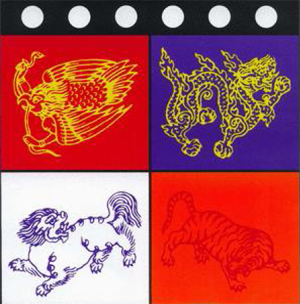
SHAMBHALA
Introduction
Throughout history, men and women have aspired to create societies that enable them to live dignified and decent lives with care for each other and our surrounding world within a flourishing culture. This is the vision of Enlightened Society of Shambhala.
Shambhala is a community of people practicing the Shambhala Buddhist traditions of enlightened living, as well as other contemplative disciplines. These practices bring into our ordinary lives a natural sense of goodness, fearlessness, and humour.
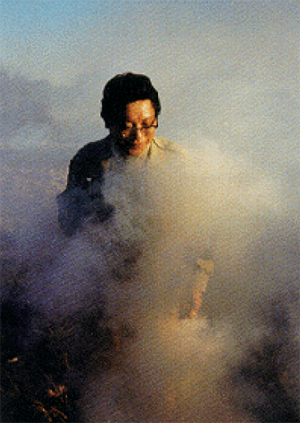
The Shambhala Buddhist teachings are practised and studied in a worldwide association of meditation centres founded by Vidyadhara the Venerable Chbgyam Trungpa Rinpoche and now directed by his son and spiritual heir, Sakyong Mipham Rinpoche.
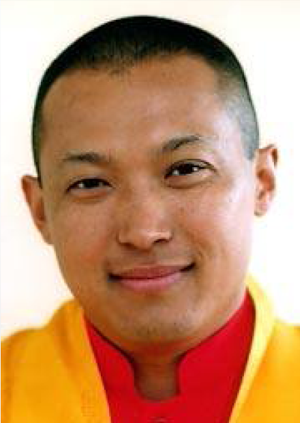
A practicing tradition
The Shambhala community draws on a wide variety of contemplative traditions. The core practice is mindfulness/awareness meditation. Instruction follows the tradition of oral transmission from teacher to student-an unbroken lineage that goes back twenty-five hundred years.
Buddhism is an ancient teaching based on the practice of meditation and study of our minds and lives, to awaken our true nature, enlightenment. The Shambhala teachings, taught by the Buddha to the first King of Shambhala, are teachings on how to live in the world, with an open heart and a fearless-awake mind. The ground of both these teachings is the practice of Mindfulness/Awareness meditation, and we offer thorough training in meditation in our Shambhala Centres and programs.
Contemplative Disciplines
The spiritual path and our practice of meditation are not an escape from the world, but a way to wake up to the world and appreciate its wealth. Therefore, in addition to meditation, we also use other forms of contemplative disciplines such as art, archery and photography to work with our minds and experience the world fully.
For more information:
Shambhala worldwide: (http://www.shambhala.org/
Shambhala Europe (http://www.shambhala-europe.org/
Sakyong Mipham Rinpoche (http://www.mipham.com/
Shambhala Publications (http://www.shambhala.com/
SHAMBHALA CENTRES: THE COURT PRINCIPLE
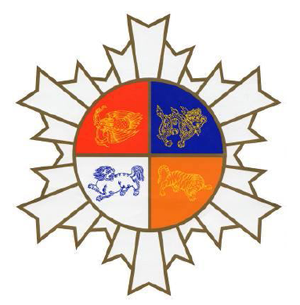
The view
The Kingdom of Shambhala, which culture and teachings arose from the four great ancestral lineages of India, Tibet, China and Japan - aims at creating enlightened society for all sentient beings. This is based upon the principles of fearlessness and gentleness and grounded in the meditation practices of mindfulness and awareness.
In our Shambhala Tradition, our practice as human beings has to do with connecting heaven and earth. That is the task of humanity, and being human is very much connected to bridging the gap between heaven and earth. In our tradition we talk of the energy of the Great Eastern Sun, a basic energy which is always available to us. We connect to that energy through invoking drala. Working with the three aspects of drala: ultimate, inner and outer, are ways in which we overcome aggression and experience the Great Eastern Sun. We want to invite the dralas back into the world, they have left because of the degradation of the world. We can connect with dralas everywhere, but some places it is easier to do this. And some places more connected to the specific dralas of the Shambhala world. Shambhala dralas are particularly concerned with overcoming aggression.
In order to facilitate spiritual development the principles of Sacred Space and Court are used. The description follows the logic of Outer - Inner - Secret. However, since the underlying view and principles of court and sacred space are discussed in the 'Secret' section - this will be presented first. Then the application of these principles in 'Inner' and 'Outer' will clearly follow from the previous.
It is this view that guides our path to fruition, without which we would not know what it means to live and work and meditate in a court - a place of wakefulness.
Introduction to the Court principle
The Kingdom of Shambhala, which culture and teachings arose from the four great ancestral lineages of India, Tibet, China and Japan - aims at creating enlightened society for all sentient beings. This is based upon the principles of fearlessness and gentleness and grounded in the meditation practices of mindfulness and awareness. In this sense, the modern day Shambhala tradition as founded by Dorje DraduI Vidyadhara Chogyam Trungpa Rinpoche, is a direct heir of the ancestral lineage of King Gesar of Ling, who represented Shambhala on earth.
In this tradition, the secular and spiritual are combined - based on the vision of the Rigden, the vision of the family of Basic Goodness / Buddha Nature and the Vajra Principle of indestructible space.
Shambhala is therefore lead by a Sage King - Sakyong Mipham Rinpoche - who is as his title says: Protector of the Earth, a meaning that reaches beyond the mere notion of kingship. The Sakyong is celestially appointed and joins heaven and earth together in establishing enlightened human society. The court of the Sakyong is the manifestation of the Buddhist and Shambhala lineages and its principles of meek, perky, outrageous and inscrutable.
The Sakyong needs a Court to fulfil his role - which is to join Heaven, Earth and Humanity. Here this means that Heaven is the vision of establishing the will of the Rigden - the salvation of the world through creating an Enlightened Society, based upon the notion of Basic Goodness. Earth here is the understanding of the local Dralas - how they work, how to interact with them in setting up the container for court, practice and study. Finally Humanity is the aspect of Enlightened Society or Enlightened World. So the Court is a place that serves as a binding factor, it prevents chaos and a place to raise lungta! The Court gives a sense of belonging, of care, of sangha and a reminder of bodhicitta.
Much information on court is already published in 'The Court Vision and Practice'. As it says in it's foreword, the aim of that document is 'to free this world from the dark age of materialism, and to promote great vision and the splendour of vast mind beyond poverty and pettiness (...)', This is also an interesting way to look at the role of the Court.
The court principle has six aspects with regards to its energetics, how it is manifested. In that sense these aspects describe the court as a mandala - or geometry of power: the alignment of the energetics of power at all its levels. The description of the court principle is found in great detail in the sacred texts as the Ghuyagarbha Tantra and in the 'Golden Sun of the Great East'.
Functions and structure of the court
These relationships within the court revolve around the Sage King, who is the centre of the court. He has people on his left and right sides, everyone at his or her appropriate position and distance: ministers, governors, generals, advisors, etc. When a king receives his subjects - the relationships are clear, visible and therefore natural hierarchy can arise. In this context the order of Heaven <-> Earth <-> Man can be equated with King <-> Ministers <-> Subjects. This is also clear from the description provided in 'The golden Sun of the Great East': 'In Kalapa, the capital, the dharma king of Shambhala first executed the primordial Ashe. On his right sat ministers on tiger-skin seats; on his left, queens on leopard-skin seats; before him, dapons on bear-skin seats; surrounding his domain, the Rigden dralas (..,)'. When a king receives his subjects - the relationships are clear, visible and therefore natural hierarchy can arise.
In the context of a Shambhala Centre this notion of a King, his advisers and subjects can be translated into the order of Heaven <-> Humanity <-> Earth. This means that people (humanity) are appointed to a certain post within the centre and they are responsible for translating the view of the teachings (heaven) into the actual workings of the centre (earth). There is a large responsibility that comes with such a post. The right people should be appointed to the right post, for mismatches can cause harm .. In 'The golden Sun of the Great East': 'If the horse has no saddle, there is no dignity in riding. If the sun had no rays, the people would be blind. If the warrior has no sword, the blessings of the dralas cannot be gathered (...)'.
In a Shambhala Centre it also means that people should have a proper seat, not only on a board or as a title, but also a real physical seat. This means that a number of people - especially the director and the Rusung - should have a desk in an office from which to work. The function pertains to the role and position and duties individuals hold within the court: who does what.
A Shambhala Court should be viewed as a mandala, another expression of the word 'container.' In a mandala different levels exist all of them connected through a bright and clear path. In the table below, the various levels of the mandala are indicated according to the various traditions as well as the functions and activities of those levels.
Shambhalian / Drala: Outer Court / Lu / External Kalapa Court
• Buddhist: Nirmanakaya
• Dorje Kasung: Perimeter / Ramparts
• Properties and Activities: This is the level of the mundane world and deals with the concrete every day aspects of people's lives and activities. Activities here are of planning, outreach, education and administration.
Shambhalian / Drala: Inner Court / Nyen / Internal Kalapa Court
• Buddhist: Sambhogakaya
• Dorje Kasung: Bailey
• Properties and Activities: On this level the environment, people and their activities are all seen as energy fields and fluxes of energy. Perception at this level is just radiance and luminosity. Activities here are meditation practice and teaching and study of the Dharma.
Shambhalian I Drala: Secret Court / Lha / Ultimate Kalapa Court
• Buddhist: Dharmakaya
• Dorje Kasung: Keep / Donjon
• Properties and Activities: This is the level which consists of nonconceptual space and which cannot be described further. The activity here is related with the higher vajrayana practices, with lungs and transmission.
In 1978, the Dorje Dradul talks about the Cosmic Mirror accommodating everything since it has NO middle and NO fringe. This in contrast to the notion of mandala - which means 'centre and fringe'. However the reason for the existence of the Court is to act as a mandala principle, in which things can be centralized rather than diffused. So the mandala principle is there to guide us on a relative level in working with something similar, but boundless on an absolute level).
COURT ENERGETICS
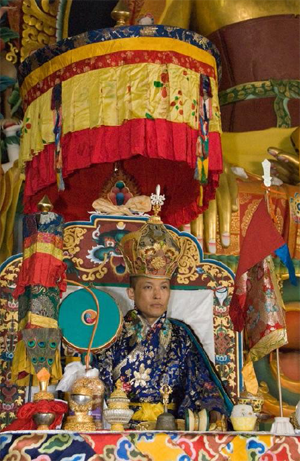
Space
This aspect has two parts: a) the mundane part: what will bring out the energy of the land that supports practice; and b) the space that the court creates by itself.
The energy of the land:
All places on earth carry energy. Some places carry more energy than others and it may come in terms of beneficial, neutral, wrathful or even malevolent. Selecting the appropriate location on the land will have a strong influence on the spiritual practice that takes place there, for good or for bad. Jamgon Kongtrul the Great (1813-1899) pointed these aspects out in his guides to retreat and to pilgrimage. In his book 'Sacred Ground', Jamgon Kongtrul Rinpoche has written extensively on pilgrimage and sacred geography. In his book he for example discusses at great length how a particular scared [sacred] place originated; what different categories of sacred places exist; a proof of the existence of sacred places; descriptions of the particular place itself and how it appears to both lay people, initiated ones and exalted ones; how that place was blessed and its energy opened; the features of the place how to perform a pilgrimage there and what the benefits of that pilgrimage are. In particular that last aspect is interesting since it clearly and repeatedly and from many sources states that 'One day of meditation in these places, Brings one closer to attainment than a year of meditation in on ordinary place '.
Now the great Tibetan teachers are first and foremost practical people who do not want to waste effort on the spiritual path. They understand that one needs all the help one can get to attain enlightenment and walk the bodhisattva path. The teachers, the teachings and the sangha are crucial, as is one's effort and diligence. But what Jamgon Kongtrul here also clearly shows is that the physical location where one practices can literally make - or conversely break when in the wrong spot, although he doesn't say that - the accomplishment of one's practice. In Tibet entire volumes were filled with descriptions of such sacred sites along the lines of Jamgon Kongtrul's chapters above. Lists of sacred sites were sometimes found as 'terma' or treasure texts, hidden in magical places such as rocks, lakes or the sky, by Padmasambhava or Guru Rinpoche as he is called, or by his consort Yeshe Tsogyal.
The very spaces we use for practice should be a physical representation of and support for the spiritual path we are following. The structure of a space follows the sequence of three zones: Outer - Inner - Secret. These are connected by the bright and clear path. When such a structure is in place, practitioners know where they are, and where they are heading and gives them clear guidance on this path of transformation of attitude. In addition to this structure of three zones and their connection, is the principle of protection. Good protection allows energy to be gathered and collected and not run out. Protection in this sense deals with ensuring the possibility for practice and safeguarding the accomplishment of the practitioners.
The space created by the court itself:
When a court is in place at any location: its energetics are generated by the container and the people within it. These energetics are created through activity, ceremony and ritual, all performed in the proper way, at the proper moment by the appropriate people. A good example is the mandala of Magyel Pomra Encampment by the Dorje Kasung.
Time
This aspect is the same as in the principle of timeliness by Sun Tzu. When the preconditions for a situation have been set up - then the fruition will come at the right moment. The skill is to choose the precise moment when to initiate which action. If the window of opportunity is missed - then we cannot capture the energetics. All comes down to building up the right set of preconditions - so that when the moment comes, everything is in place and can be set in motion in order to achieve the best result.
Sun Tzu, in his work 'The Art of War', devoted much time in explaining the need to build up that potential energy and its release. He equates it to the drawing of the bow and the release of the arrow. In chapter 5 of his work he writes: 'The rush of water, to the point of tossing racks about. This is shih. The strike of a hawk, at the killing snap. This is the node. Therefore, one skilled at battle: his shih is steep. His node is short. Shih is like drawing the crossbow. The node is like pulling the trigger (...)'. So only when one knows how to set up the preconditions and when to actualise the motion - one is able to bring out all inherent possibilities and energies of a situation.
Ambient
This is equated as the state of constant preparedness. The state of sustained energetics, maintaining a constant preparedness for the arrival of the court - is like a constant background hum that has the potential of actualisation, but has not actualised yet. It sits ready for action every moment of every day.
The state of constant preparedness can be equated like a bowl with food: an elegant and functional container has been created - the food sits ready and all that needs to happen is that is [it] will be picked up and eaten. When a centre is in a state of constant preparedness: there is no nervousness, no panic, no anger or frustration. When the Sage King arrives at any given moment: there is no problem at all - Sakyong Mipham Rinpoche can arrive and take his seat in this part of his Kingdom of Shambhala.
Emergent
Energy like a spike of power. When the Sage King - Sakyong Mipham Rinpoche travels with his court - there must be a constant state of preparedness through having set up the preconditions to receive him. There must be a ground present. When that is the case, then a sudden spike of power will happen: something flares up out of this and dissolves again. Because of the preconditions that were set up, because of all preparedness - the power that bursts forth has no choice but to go forward and do it. The mandala is pregnant and the only thing that can happen next is giving birth. Sakyong Mipham Rinpoche in this case is like a key turning a lock. If there is no lock to be turned - there will be no progress and the key lies idle.
It is like executing the stroke of Ashe: after having set up the ink, paper and brush - after having gone through the preliminaries - the stroke is inevitable, it must happen. Afterwards there is nothing to go back to. The stroke has happened, we fold up the paper and discard it. However the surge of emergent energy, of power is used in our personal transformation because we have set up the environment so carefully and with attention to every detail. A beautiful description is given in 'The golden Sun of the Great East': 'The king held the fearless brush, soaked in the ink of mercy. He touched it to the tip of his tongue, invoking the dralas of the past, present and future. First he placed the A dot (...) up to: At that moment the Eastern Sun matured (...)'.
The whole
When all parts are in place: when a space has been set up in the proper manner: Outer - Inner - Secret plus its connecting Bright and Clear Path, with good protection; when the appropriate ceremonies have been performed; when all officials and participants are in their appropriate position, doing the right things; when conducted at the proper time and as a result of constant preparedness: all of these accumulated will through their amplification - when the Sage King comes and takes his seat flare as a spark of emergent energy. Given the preparedness and container - this emergent energy is then available to transform the world.
Lha, Nyen and Lu
The principles of Lha, Nyen and Lu are at the heart of the Shambhala teachings. In 'The Letter of the Golden Key', the Vidyadhara Chogyam Trungpa Rinpoche devoted a substantial part of the text to these principles. In fact the text states that if the order of these three is not obeyed - damage will follow: 'If the order of Lha, Nyen and Lu is violated, slander arises and windhorse weakens; a kalpa of sickness and war is born (...)'.
However, we should realize that the principles of Lha, Nyen and Lu apply to more levels than the one illustrated: ranging from the position of the Shambhala centre in the landscape down to the organization of the shelves in a cupboard. Ideally one needs a good proportion of all three principles, as there are three levels of practitioners: in 'The Letter of the Black Ashe', the Dorje DraduI described the warriors who went to the highland mountains and erected crystal palaces to live in. Others went to the lands of lakes and islands and started to live there. Finally the last group went to live in the pleasant plains. All these are practitioners of different accomplishment, but all have their role in society.
The space of the court
All places on earth carry energy. Some places carry more energy than others and it may come in terms of beneficial, neutral, wrathful or even malevolent. Selecting the appropriate location on the land will have a strong influence on the activity that takes place there, for good or for bad. This is particularly true for spiritual practices.
The very spaces we use for practice should be a physical representation of and support for the spiritual path we are following. The structure of a space follows the sequence of three zones: Outer - Inner - Secret. These are connected by the bright and clear path. When such a structure is in place, practitioners know where they are, and where they are heading and gives them clear guidance on this path of transformation of attitude.
In addition to this structure of three zones and their connection, is the principle of protection. Good protection allows energy to be gathered and collected and not run out. Protection in this sense deals with ensuring the possibility for practice and safeguarding the accomplishment of the practitioners.
When a court is in place somewhere: the container and the people within it generate energy. These energetics are created through activity, ceremony and ritual, all performed in the proper way, at the proper moment by the appropriate people.
The seat of the king
For the Sakyong, to facilitate his contact with the sangha on his travels, there must be a constant state of preparedness in the whole mandala to receive him. There must be a ground present. So when a Shambhala Centre is in some constant state of preparedness for the Sakyong to arrive, then when he does, a sudden burst of power can happen: something flares up and dissolves again. Because of the preconditions that were set up, because of all preparedness - this power that bursts forth has no choice but to go forward and do it. The mandala is pregnant and the only thing that can happen next is giving birth.
All comes down to building up the right set of preconditions - so that when the moment comes, everything is in place and can be set in motion in order to achieve the best result. Sun Tzu, in his work 'The Art of War', devoted much time in explaining the need to build up that potential energy and its release. So only when one knows how to set up the preconditions and when to actualize the motion - one is able to bring out all inherent possibilities and energies of a situation.
This constant state of preparedness also has another effect: the presence of the Sakyong is more immediately felt in the Shambhala Centre. If we view Shambhala as a mandala, then is has by definition a centre and a fringe. The Shambhala Centre is an actual mental and physical gate into the Shambhala mandala. As a fringe, it should reflect the centre, reflect the embodiment of the Shambhala lineage: Sakyong Mipham Rinpoche. By being prepared for his arrival, that connection becomes alive and powerful.
So when all parts are in place: when a space has been set up in the proper manner: Outer - Inner - Secret plus its connecting Bright and Clear Path, with good protection; when the appropriate ceremonies have been performed; when all officials and participants are in their appropriate position, doing the right things; when conducted at the proper time and as a result of constant preparedness: all of these accumulated will through their amplification - when the Sage King comes and takes his seat flare as a spark of emergent energy. Given the preparedness and container - this emergent energy is then available to transform the world.
Kanyu, Fengshui and Court Energetics
PART II: ON THE ENERGETICS OF SHAMBHALA CENTRES
Based on the teachings of Eva Wong
Editor: Peter C. van der Molen
Version: 13012012
NOTICE: THIS WORK MAY BE PROTECTED BY COPYRIGHT
YOU ARE REQUIRED TO READ THE COPYRIGHT NOTICE AT THIS LINK BEFORE YOU READ THE FOLLOWING WORK, THAT IS AVAILABLE SOLELY FOR PRIVATE STUDY, SCHOLARSHIP OR RESEARCH PURSUANT TO 17 U.S.C. SECTION 107 AND 108. IN THE EVENT THAT THE LIBRARY DETERMINES THAT UNLAWFUL COPYING OF THIS WORK HAS OCCURRED, THE LIBRARY HAS THE RIGHT TO BLOCK THE I.P. ADDRESS AT WHICH THE UNLAWFUL COPYING APPEARED TO HAVE OCCURRED. THANK YOU FOR RESPECTING THE RIGHTS OF COPYRIGHT OWNERS.
Table of Contents
• INTRODUCTION
• SHAMBHALA
• SHAMBHALA CENTRES: THE COURT PRINCIPLE
• COURT ENERGETICS
• SACRED SPACE OF THE SHAMBHALA CENTRE
• PROTECTOR PRINCIPLE
• COLOPHON
INTRODUCTION
As human beings we aim at leading a happy and meaningful life, in which we not only need to care for ourselves and those around us, but also want to develop in a spiritual sense in order to work with our daily experiences. Many traditions over many millennia have aimed at providing the conditions for a happy life and spiritual development. In Asia some traditions stand out in this sense: in Tibet it is the Buddhist spiritual path and the Warrior traditions that have evolved over many lifetimes. In China the Daoist path and the wisdom traditions of K'an-yu and Fengshui have provided the means for spiritual development as well as the means to live harmoniously with the land.
In their efforts, Sakyong Mipham Rinpoche and Eva Wong strive to bring these traditions together to shape a bright and clear path for spiritual development as warriors in the modern day world. In this document we will discuss Sacred Space, or the spatial conditions that will allow us to connect with our Basic Goodness or Buddha Nature, through meditation practices, rituals and ceremonies. The depth of the connection made depends of course on many factors such as effort, insight, wisdom and karma. But apart from the mental space, it also depends on the physical space one is in.
In this document we focus on the Shambhala Court principle and its energetics. This knowledge will help us with its application in our Shambhala practice centres.

SHAMBHALA
Introduction
Throughout history, men and women have aspired to create societies that enable them to live dignified and decent lives with care for each other and our surrounding world within a flourishing culture. This is the vision of Enlightened Society of Shambhala.
Shambhala is a community of people practicing the Shambhala Buddhist traditions of enlightened living, as well as other contemplative disciplines. These practices bring into our ordinary lives a natural sense of goodness, fearlessness, and humour.

The Shambhala Buddhist teachings are practised and studied in a worldwide association of meditation centres founded by Vidyadhara the Venerable Chbgyam Trungpa Rinpoche and now directed by his son and spiritual heir, Sakyong Mipham Rinpoche.

A practicing tradition
The Shambhala community draws on a wide variety of contemplative traditions. The core practice is mindfulness/awareness meditation. Instruction follows the tradition of oral transmission from teacher to student-an unbroken lineage that goes back twenty-five hundred years.
Buddhism is an ancient teaching based on the practice of meditation and study of our minds and lives, to awaken our true nature, enlightenment. The Shambhala teachings, taught by the Buddha to the first King of Shambhala, are teachings on how to live in the world, with an open heart and a fearless-awake mind. The ground of both these teachings is the practice of Mindfulness/Awareness meditation, and we offer thorough training in meditation in our Shambhala Centres and programs.
Contemplative Disciplines
The spiritual path and our practice of meditation are not an escape from the world, but a way to wake up to the world and appreciate its wealth. Therefore, in addition to meditation, we also use other forms of contemplative disciplines such as art, archery and photography to work with our minds and experience the world fully.
For more information:
Shambhala worldwide: (http://www.shambhala.org/
Shambhala Europe (http://www.shambhala-europe.org/
Sakyong Mipham Rinpoche (http://www.mipham.com/
Shambhala Publications (http://www.shambhala.com/
SHAMBHALA CENTRES: THE COURT PRINCIPLE

The view
The Kingdom of Shambhala, which culture and teachings arose from the four great ancestral lineages of India, Tibet, China and Japan - aims at creating enlightened society for all sentient beings. This is based upon the principles of fearlessness and gentleness and grounded in the meditation practices of mindfulness and awareness.
In our Shambhala Tradition, our practice as human beings has to do with connecting heaven and earth. That is the task of humanity, and being human is very much connected to bridging the gap between heaven and earth. In our tradition we talk of the energy of the Great Eastern Sun, a basic energy which is always available to us. We connect to that energy through invoking drala. Working with the three aspects of drala: ultimate, inner and outer, are ways in which we overcome aggression and experience the Great Eastern Sun. We want to invite the dralas back into the world, they have left because of the degradation of the world. We can connect with dralas everywhere, but some places it is easier to do this. And some places more connected to the specific dralas of the Shambhala world. Shambhala dralas are particularly concerned with overcoming aggression.
Chögyam Trungpa initially translated Tibetan drala into an English compound word, wargod. He termed this "not the best translation," but its provisional use was to establish dralas as "gods who conquer war rather than propagate it."
-- The Drala Principle, by Bill Scheffel
In order to facilitate spiritual development the principles of Sacred Space and Court are used. The description follows the logic of Outer - Inner - Secret. However, since the underlying view and principles of court and sacred space are discussed in the 'Secret' section - this will be presented first. Then the application of these principles in 'Inner' and 'Outer' will clearly follow from the previous.
It is this view that guides our path to fruition, without which we would not know what it means to live and work and meditate in a court - a place of wakefulness.
Introduction to the Court principle
The Kingdom of Shambhala, which culture and teachings arose from the four great ancestral lineages of India, Tibet, China and Japan - aims at creating enlightened society for all sentient beings. This is based upon the principles of fearlessness and gentleness and grounded in the meditation practices of mindfulness and awareness. In this sense, the modern day Shambhala tradition as founded by Dorje DraduI Vidyadhara Chogyam Trungpa Rinpoche, is a direct heir of the ancestral lineage of King Gesar of Ling, who represented Shambhala on earth.
In part of the Indo-Tibetan Vajrayana Buddhist tradition, thirty-two Kings of Shambhala reside in a mythical kingdom.
-- Kings of Shambhala, by Wikipedia
In this tradition, the secular and spiritual are combined - based on the vision of the Rigden, the vision of the family of Basic Goodness / Buddha Nature and the Vajra Principle of indestructible space.
Shambhala is therefore lead by a Sage King - Sakyong Mipham Rinpoche - who is as his title says: Protector of the Earth, a meaning that reaches beyond the mere notion of kingship. The Sakyong is celestially appointed and joins heaven and earth together in establishing enlightened human society. The court of the Sakyong is the manifestation of the Buddhist and Shambhala lineages and its principles of meek, perky, outrageous and inscrutable.
The Sakyong needs a Court to fulfil his role - which is to join Heaven, Earth and Humanity. Here this means that Heaven is the vision of establishing the will of the Rigden - the salvation of the world through creating an Enlightened Society, based upon the notion of Basic Goodness. Earth here is the understanding of the local Dralas - how they work, how to interact with them in setting up the container for court, practice and study. Finally Humanity is the aspect of Enlightened Society or Enlightened World. So the Court is a place that serves as a binding factor, it prevents chaos and a place to raise lungta! The Court gives a sense of belonging, of care, of sangha and a reminder of bodhicitta.
Much information on court is already published in 'The Court Vision and Practice'. As it says in it's foreword, the aim of that document is 'to free this world from the dark age of materialism, and to promote great vision and the splendour of vast mind beyond poverty and pettiness (...)', This is also an interesting way to look at the role of the Court.
The court principle has six aspects with regards to its energetics, how it is manifested. In that sense these aspects describe the court as a mandala - or geometry of power: the alignment of the energetics of power at all its levels. The description of the court principle is found in great detail in the sacred texts as the Ghuyagarbha Tantra and in the 'Golden Sun of the Great East'.
Functions and structure of the court
These relationships within the court revolve around the Sage King, who is the centre of the court. He has people on his left and right sides, everyone at his or her appropriate position and distance: ministers, governors, generals, advisors, etc. When a king receives his subjects - the relationships are clear, visible and therefore natural hierarchy can arise. In this context the order of Heaven <-> Earth <-> Man can be equated with King <-> Ministers <-> Subjects. This is also clear from the description provided in 'The golden Sun of the Great East': 'In Kalapa, the capital, the dharma king of Shambhala first executed the primordial Ashe. On his right sat ministers on tiger-skin seats; on his left, queens on leopard-skin seats; before him, dapons on bear-skin seats; surrounding his domain, the Rigden dralas (..,)'. When a king receives his subjects - the relationships are clear, visible and therefore natural hierarchy can arise.
In the context of a Shambhala Centre this notion of a King, his advisers and subjects can be translated into the order of Heaven <-> Humanity <-> Earth. This means that people (humanity) are appointed to a certain post within the centre and they are responsible for translating the view of the teachings (heaven) into the actual workings of the centre (earth). There is a large responsibility that comes with such a post. The right people should be appointed to the right post, for mismatches can cause harm .. In 'The golden Sun of the Great East': 'If the horse has no saddle, there is no dignity in riding. If the sun had no rays, the people would be blind. If the warrior has no sword, the blessings of the dralas cannot be gathered (...)'.
In a Shambhala Centre it also means that people should have a proper seat, not only on a board or as a title, but also a real physical seat. This means that a number of people - especially the director and the Rusung - should have a desk in an office from which to work. The function pertains to the role and position and duties individuals hold within the court: who does what.
A Shambhala Court should be viewed as a mandala, another expression of the word 'container.' In a mandala different levels exist all of them connected through a bright and clear path. In the table below, the various levels of the mandala are indicated according to the various traditions as well as the functions and activities of those levels.
Shambhalian / Drala: Outer Court / Lu / External Kalapa Court
• Buddhist: Nirmanakaya
• Dorje Kasung: Perimeter / Ramparts
• Properties and Activities: This is the level of the mundane world and deals with the concrete every day aspects of people's lives and activities. Activities here are of planning, outreach, education and administration.
Shambhalian / Drala: Inner Court / Nyen / Internal Kalapa Court
• Buddhist: Sambhogakaya
• Dorje Kasung: Bailey
• Properties and Activities: On this level the environment, people and their activities are all seen as energy fields and fluxes of energy. Perception at this level is just radiance and luminosity. Activities here are meditation practice and teaching and study of the Dharma.
Shambhalian I Drala: Secret Court / Lha / Ultimate Kalapa Court
• Buddhist: Dharmakaya
• Dorje Kasung: Keep / Donjon
• Properties and Activities: This is the level which consists of nonconceptual space and which cannot be described further. The activity here is related with the higher vajrayana practices, with lungs and transmission.
In 1978, the Dorje Dradul talks about the Cosmic Mirror accommodating everything since it has NO middle and NO fringe. This in contrast to the notion of mandala - which means 'centre and fringe'. However the reason for the existence of the Court is to act as a mandala principle, in which things can be centralized rather than diffused. So the mandala principle is there to guide us on a relative level in working with something similar, but boundless on an absolute level).
COURT ENERGETICS

Space
This aspect has two parts: a) the mundane part: what will bring out the energy of the land that supports practice; and b) the space that the court creates by itself.
The energy of the land:
All places on earth carry energy. Some places carry more energy than others and it may come in terms of beneficial, neutral, wrathful or even malevolent. Selecting the appropriate location on the land will have a strong influence on the spiritual practice that takes place there, for good or for bad. Jamgon Kongtrul the Great (1813-1899) pointed these aspects out in his guides to retreat and to pilgrimage. In his book 'Sacred Ground', Jamgon Kongtrul Rinpoche has written extensively on pilgrimage and sacred geography. In his book he for example discusses at great length how a particular scared [sacred] place originated; what different categories of sacred places exist; a proof of the existence of sacred places; descriptions of the particular place itself and how it appears to both lay people, initiated ones and exalted ones; how that place was blessed and its energy opened; the features of the place how to perform a pilgrimage there and what the benefits of that pilgrimage are. In particular that last aspect is interesting since it clearly and repeatedly and from many sources states that 'One day of meditation in these places, Brings one closer to attainment than a year of meditation in on ordinary place '.
Now the great Tibetan teachers are first and foremost practical people who do not want to waste effort on the spiritual path. They understand that one needs all the help one can get to attain enlightenment and walk the bodhisattva path. The teachers, the teachings and the sangha are crucial, as is one's effort and diligence. But what Jamgon Kongtrul here also clearly shows is that the physical location where one practices can literally make - or conversely break when in the wrong spot, although he doesn't say that - the accomplishment of one's practice. In Tibet entire volumes were filled with descriptions of such sacred sites along the lines of Jamgon Kongtrul's chapters above. Lists of sacred sites were sometimes found as 'terma' or treasure texts, hidden in magical places such as rocks, lakes or the sky, by Padmasambhava or Guru Rinpoche as he is called, or by his consort Yeshe Tsogyal.
The very spaces we use for practice should be a physical representation of and support for the spiritual path we are following. The structure of a space follows the sequence of three zones: Outer - Inner - Secret. These are connected by the bright and clear path. When such a structure is in place, practitioners know where they are, and where they are heading and gives them clear guidance on this path of transformation of attitude. In addition to this structure of three zones and their connection, is the principle of protection. Good protection allows energy to be gathered and collected and not run out. Protection in this sense deals with ensuring the possibility for practice and safeguarding the accomplishment of the practitioners.
The space created by the court itself:
When a court is in place at any location: its energetics are generated by the container and the people within it. These energetics are created through activity, ceremony and ritual, all performed in the proper way, at the proper moment by the appropriate people. A good example is the mandala of Magyel Pomra Encampment by the Dorje Kasung.
Time
This aspect is the same as in the principle of timeliness by Sun Tzu. When the preconditions for a situation have been set up - then the fruition will come at the right moment. The skill is to choose the precise moment when to initiate which action. If the window of opportunity is missed - then we cannot capture the energetics. All comes down to building up the right set of preconditions - so that when the moment comes, everything is in place and can be set in motion in order to achieve the best result.
Sun Tzu, in his work 'The Art of War', devoted much time in explaining the need to build up that potential energy and its release. He equates it to the drawing of the bow and the release of the arrow. In chapter 5 of his work he writes: 'The rush of water, to the point of tossing racks about. This is shih. The strike of a hawk, at the killing snap. This is the node. Therefore, one skilled at battle: his shih is steep. His node is short. Shih is like drawing the crossbow. The node is like pulling the trigger (...)'. So only when one knows how to set up the preconditions and when to actualise the motion - one is able to bring out all inherent possibilities and energies of a situation.
Ambient
This is equated as the state of constant preparedness. The state of sustained energetics, maintaining a constant preparedness for the arrival of the court - is like a constant background hum that has the potential of actualisation, but has not actualised yet. It sits ready for action every moment of every day.
Preparedness Movement, in U.S. history, a campaign that began prior to U.S. entry into World War I (April 1917) to increase U.S. military capabilities and to convince the U.S. citizenry of the need for American involvement in the conflict and ongoing military preparedness. Almost immediately after the outbreak of hostilities in Europe, a small number of Americans—former president Theodore Roosevelt being among the most prominent—sought to persuade the administration of Pres. Woodrow Wilson and the population at large that the country must prepare itself for war. The fate of occupied Belgium served as an example of what could happen to an unprepared country. Roosevelt wrote two books on the subject, America and the World War (1915) and Fear God and Take Your Own Part (1916), that helped popularize the Preparedness Movement.
-- Preparedness Movement, by Encyclopaedia Britannica
The state of constant preparedness can be equated like a bowl with food: an elegant and functional container has been created - the food sits ready and all that needs to happen is that is [it] will be picked up and eaten. When a centre is in a state of constant preparedness: there is no nervousness, no panic, no anger or frustration. When the Sage King arrives at any given moment: there is no problem at all - Sakyong Mipham Rinpoche can arrive and take his seat in this part of his Kingdom of Shambhala.
Emergent
Energy like a spike of power. When the Sage King - Sakyong Mipham Rinpoche travels with his court - there must be a constant state of preparedness through having set up the preconditions to receive him. There must be a ground present. When that is the case, then a sudden spike of power will happen: something flares up out of this and dissolves again. Because of the preconditions that were set up, because of all preparedness - the power that bursts forth has no choice but to go forward and do it. The mandala is pregnant and the only thing that can happen next is giving birth. Sakyong Mipham Rinpoche in this case is like a key turning a lock. If there is no lock to be turned - there will be no progress and the key lies idle.
lock and key theory: The lock and key theory was dreamt up in Liverpool, England by an un-named genius. It states that a guy is like a key, and a girl is like a lock. A key that opens many locks is a master key, yet a lock that is opened by many keys is a shitty lock. This theory is rarely favoured by females... for some reason.
--urbandictionary.com
It is like executing the stroke of Ashe: after having set up the ink, paper and brush - after having gone through the preliminaries - the stroke is inevitable, it must happen. Afterwards there is nothing to go back to. The stroke has happened, we fold up the paper and discard it. However the surge of emergent energy, of power is used in our personal transformation because we have set up the environment so carefully and with attention to every detail. A beautiful description is given in 'The golden Sun of the Great East': 'The king held the fearless brush, soaked in the ink of mercy. He touched it to the tip of his tongue, invoking the dralas of the past, present and future. First he placed the A dot (...) up to: At that moment the Eastern Sun matured (...)'.
The whole
When all parts are in place: when a space has been set up in the proper manner: Outer - Inner - Secret plus its connecting Bright and Clear Path, with good protection; when the appropriate ceremonies have been performed; when all officials and participants are in their appropriate position, doing the right things; when conducted at the proper time and as a result of constant preparedness: all of these accumulated will through their amplification - when the Sage King comes and takes his seat flare as a spark of emergent energy. Given the preparedness and container - this emergent energy is then available to transform the world.
Lha, Nyen and Lu
The principles of Lha, Nyen and Lu are at the heart of the Shambhala teachings. In 'The Letter of the Golden Key', the Vidyadhara Chogyam Trungpa Rinpoche devoted a substantial part of the text to these principles. In fact the text states that if the order of these three is not obeyed - damage will follow: 'If the order of Lha, Nyen and Lu is violated, slander arises and windhorse weakens; a kalpa of sickness and war is born (...)'.
However, we should realize that the principles of Lha, Nyen and Lu apply to more levels than the one illustrated: ranging from the position of the Shambhala centre in the landscape down to the organization of the shelves in a cupboard. Ideally one needs a good proportion of all three principles, as there are three levels of practitioners: in 'The Letter of the Black Ashe', the Dorje DraduI described the warriors who went to the highland mountains and erected crystal palaces to live in. Others went to the lands of lakes and islands and started to live there. Finally the last group went to live in the pleasant plains. All these are practitioners of different accomplishment, but all have their role in society.
The space of the court
All places on earth carry energy. Some places carry more energy than others and it may come in terms of beneficial, neutral, wrathful or even malevolent. Selecting the appropriate location on the land will have a strong influence on the activity that takes place there, for good or for bad. This is particularly true for spiritual practices.
The very spaces we use for practice should be a physical representation of and support for the spiritual path we are following. The structure of a space follows the sequence of three zones: Outer - Inner - Secret. These are connected by the bright and clear path. When such a structure is in place, practitioners know where they are, and where they are heading and gives them clear guidance on this path of transformation of attitude.
In addition to this structure of three zones and their connection, is the principle of protection. Good protection allows energy to be gathered and collected and not run out. Protection in this sense deals with ensuring the possibility for practice and safeguarding the accomplishment of the practitioners.
When a court is in place somewhere: the container and the people within it generate energy. These energetics are created through activity, ceremony and ritual, all performed in the proper way, at the proper moment by the appropriate people.
The seat of the king
For the Sakyong, to facilitate his contact with the sangha on his travels, there must be a constant state of preparedness in the whole mandala to receive him. There must be a ground present. So when a Shambhala Centre is in some constant state of preparedness for the Sakyong to arrive, then when he does, a sudden burst of power can happen: something flares up and dissolves again. Because of the preconditions that were set up, because of all preparedness - this power that bursts forth has no choice but to go forward and do it. The mandala is pregnant and the only thing that can happen next is giving birth.
All comes down to building up the right set of preconditions - so that when the moment comes, everything is in place and can be set in motion in order to achieve the best result. Sun Tzu, in his work 'The Art of War', devoted much time in explaining the need to build up that potential energy and its release. So only when one knows how to set up the preconditions and when to actualize the motion - one is able to bring out all inherent possibilities and energies of a situation.
This constant state of preparedness also has another effect: the presence of the Sakyong is more immediately felt in the Shambhala Centre. If we view Shambhala as a mandala, then is has by definition a centre and a fringe. The Shambhala Centre is an actual mental and physical gate into the Shambhala mandala. As a fringe, it should reflect the centre, reflect the embodiment of the Shambhala lineage: Sakyong Mipham Rinpoche. By being prepared for his arrival, that connection becomes alive and powerful.
So when all parts are in place: when a space has been set up in the proper manner: Outer - Inner - Secret plus its connecting Bright and Clear Path, with good protection; when the appropriate ceremonies have been performed; when all officials and participants are in their appropriate position, doing the right things; when conducted at the proper time and as a result of constant preparedness: all of these accumulated will through their amplification - when the Sage King comes and takes his seat flare as a spark of emergent energy. Given the preparedness and container - this emergent energy is then available to transform the world.
